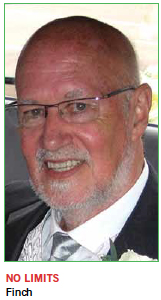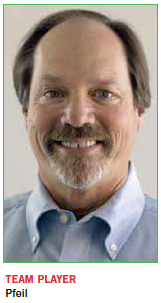The 2013 Class developed many of the tools still used by PCB designers today.
The father of the gridless router. The largest seller of CAD seats. A leading inventor of team-based design. The foremost signal integrity guru.
These are the four latest inductees to the Dieter W. Bergman PCB Design Hall of Fame.
They include two deans of CAD software development: Rich Nedbal, the founder of P-CAD, and the late Alan Finch, of Racal-Redac. The 2013 Class also includes Charles Pfeil, who invented a method for several users to simultaneously edit a single design without, in short, messing everything up. And finally there is Dr. Howard Johnson, the brilliant and relentless signal integrity guru, whose groundbreaking work on mixed signals overshadowed his invention of voicemail.
They join six other legends of the PCB design world in the Dieter W. Bergman PCB Hall of Fame, named for the longtime IPC technical director who has spent more than 40 years lifting the recognition and professionalism of the discipline.
Alan C. Finch is known as the father of the shape-based autorouter. In 1985, Finch, with coauthors K.J. Mackenzie, G.J. Balsdon, and G. Symonds of Racal-Redac, proposed a gridless method for designing fine-line printed circuit boards. The inventors said in their groundbreaking paper, which was presented at the 22nd IEEE Design Automation Conference, that then-current designs had “stretched most previous automatic routing algorithms to the limit.” Building on a concept from 1980 by Ulrich Lauther, the former Racal-Redac developer conceived a router with no defined cell size. The resulting tools forever changed the way printed circuit design is performed. Finch died in late December.

Dr. Howard Johnson is considered the leading authority on signal integrity, having spent much of his career demonstrating the effects of analog signals in high-speed digital systems. He is author of three books, including two on high-speed design, and has taught more than 12,000 students over his 30-plus-year career. As the Institute of Electrical and Electronics Engineers’ chief technical editor, Johnson wrote standards that govern Ethernet, IEEE 802.3 Fast Ethernet and IEEE 802.3 Gigabit Ethernet. In 1979, Johnson invented PhoneMail, the first integrated voice messaging system. During his career, Johnson was manager of technology and advanced development at ROLM, director of engineering at US TeleCenters, and manager of technology and advanced development at Ultra Network Technologies. He has bachelor’s, master’s and doctoral degrees from Rice University.

Richard (Rich) Nedbal is credited with revolutionizing computer-aided manufacturing software for printed circuit fabrication. An electrical engineer who graduated from the University of Illinois at Chicago in 1966, Nedbal worked at Carnegie Mellon Institute from 1970 to 1976, designing system logic and integrated circuits for electronic fuel injection systems prototypes. When the research program ended, Nedbal moved to California and rose through the ranks at American Microsystems, a semiconductor design and manufacturing company. In 1982, he founded Personal CAD Systems, with the goal to develop lower cost electronic CAD tools. By 1988, P-CAD, as the company came to be known, owned the largest installed base of users in the EDA industry, with over 10,000.Two years later, P-CAD had over 100,000 users, at which point Nedbal sold the firm to Accel Technologies.
Having shaken up the CAD industry, Nedbal then set his sights on CAM tools. He founded Advanced CAM Technologies in 1994. At ACT, Nedbal changed the idea of what a CAM tool could be, as its signature tool, called CAM350, was the first CAM tool to adopt many traits of a CAD tool. After Pads Software’s acquisition of ACT, in 1998, Nedbal stayed on for a year, then left the industry to purse a second career building injection systems for car engines.

Charles Pfeil has been a designer, owner of a service bureau, and an engineering manager for a variety of software vendors, including Racal, ASI, Cadence, PADS, VeriBest and Mentor Graphics. He was one of the first to latch on to the concept of team design, and one of his eight patents is for his 2002 invention of parallel electronic design (also known as shared simultaneous editing), a method that allowed multiple users to edit shared areas of a master design while preserving the design integrity. Other patents described distributed autorouting and breakouts. During his 40-plus-year career, Pfeil invented multiple CAD tools (including XtremePCB and XtremeAR, and TeamPCB for Mentor Graphics, where he also was product architect for Expedition PCB). He authored BGA Breakouts and Routing, a well-received book on designing with ball grid arrays.

Mike Buetow is editor in chief of PCD&F; This email address is being protected from spambots. You need JavaScript enabled to view it..

















